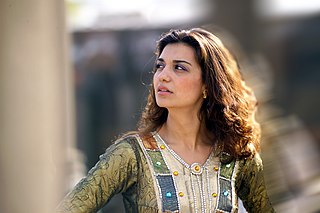
The Armenian genocide was the systematic destruction of the Armenian people and identity in the Ottoman Empire during World War I. Spearheaded by the ruling Committee of Union and Progress (CUP), it was implemented primarily through the mass murder of around one million Armenians during death marches to the Syrian Desert and the forced Islamization of others, primarily women and children.

Marsha Forchuk Skrypuch is a Ukrainian-Canadian children's writer who currently lives in Brantford, Ontario.

Georgetown is a large unincorporated community in the town of Halton Hills, Ontario, Canada, in the Regional Municipality of Halton. The town includes several small villages or settlements such as Norval, Limehouse, Stewarttown and Glen Williams near Georgetown and another large population centre, Acton. In 2016, the population of Georgetown was 42,123. It sits on the banks of the Credit River, approximately 40 km west of Toronto, and is part of the Greater Toronto Area. Georgetown was named after entrepreneur George Kennedy who settled in the area in 1821 and built several mills and other businesses.

Eric Robert Walters, is a Canadian author of young adult fiction and picture books. As of 2020, Eric Walters has written over 100 books.
Cedarvale Park is a municipal park located at 181-185 Main St. S. Georgetown, Ontario—a short walk from downtown. It is a multi-use facility, open year-round.

Isabel Bayrakdarian is a Lebanese-born Canadian operatic soprano of Armenian descent who now resides and works in the United States.

Aram Manukian, was an Armenian revolutionary, statesman, and a leading member of the Armenian Revolutionary Federation (Dashnaktsutyun) party. He is widely regarded as the founder of the First Republic of Armenia.
Dear Canada is a series of historical novels marketed at kids first published in 2001 and continuing to the present. The books are published by Scholastic Canada Ltd. They are similar to the Dear America series, with each book written in the form of the diary of a fictional young woman living during an important event in Canadian history. The series covers both familiar and little-known topics such as Home Children, North-West Rebellion, and the 1837 Rebellion.
The Armenians in Syria are Syrian citizens of either full or partial Armenian descent.

Aris Luke Alexanian was a noted world traveller, prominent Armenian Canadian and business man. Also, referred to in articles and publications as A. L. Alexanian and Aris L. Alexanian.
Armenian Canadians are citizens and permanent residents of Canada who have total or partial Armenian ancestry. According to the 2021 Canadian Census they number almost 69,000, while independent estimates claim around 80,000 Canadians of Armenian origin, with the highest estimates reaching 100,000. Though significantly smaller than the Armenian American community, the formation of both underwent similar stages beginning in the late 19th century and gradually expanding in the latter 20th century and beyond. Most Armenian Canadians are descendants of Armenian genocide survivors from the Middle East, with less than 7% of all Canadian Armenians having been born in Armenia. Today most Armenian Canadians live in Greater Montreal and Greater Toronto, where they have established churches, schools and community centers.
Armenian genocide in culture includes the ways in which people have represented the Armenian genocide of 1915 in art, literature, music, and films. Furthermore, there are dozens of Armenian genocide memorials around the world. According to historian Margaret Lavinia Anderson, the Armenian genocide had reached an "iconic status" as "the apex of horrors conceivable" prior to World War II.
Education is the foundation for the preservation of Armenian national and cultural heritage. Armenian schools teach and cultivate Armenophony, Armenology, the age-old Armenian history and the rich Armenian traditions, thus ensuring the perpetuation of Armenianism from generation to generation. The very existence of Armenian educational institutions in the countries of the Armenian Diaspora shows exactly the importance, the perseverance and the tireless efforts that the numerous Armenian communities make to avoid the "white massacre", the assimilation and peaceful disintegration of the Armenian nation. Therefore, in a way, the continuance of Armenian education up to our days is a sign of victory against the "red massacre", the Genocide.

"The Armenian and the Armenian" is a short story written by William Saroyan in August 1935 in New York. It was first published in 1936 in the collection of short stories entitled Inhale & Exhale. Over the years, the story has become known for the excerpt—"arguably [Saroyan's] most famous saying"—about the survival of the Armenian people after the genocide of 1915.

Frank E. Sysyn is an American historian of Ukrainian origin. His grandmother was from Ukraine.

West Asian Canadians, officially known as West Central Asian and Middle Eastern Canadians are Canadians who were either born in or can trace their ancestry to West Asia and Central Asia. The term West Asian Canadian is a subgroup of Asian Canadians and Middle Eastern Canadians. According to Statistics Canada, West Asian Canadians are considered visible minorities and can be further divided by nationality, such as Lebanese Canadian or Iranian Canadian.










